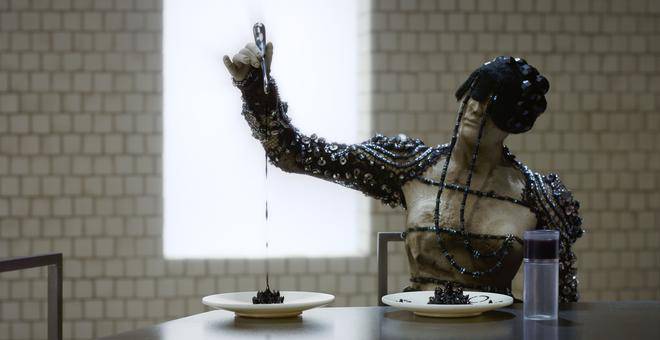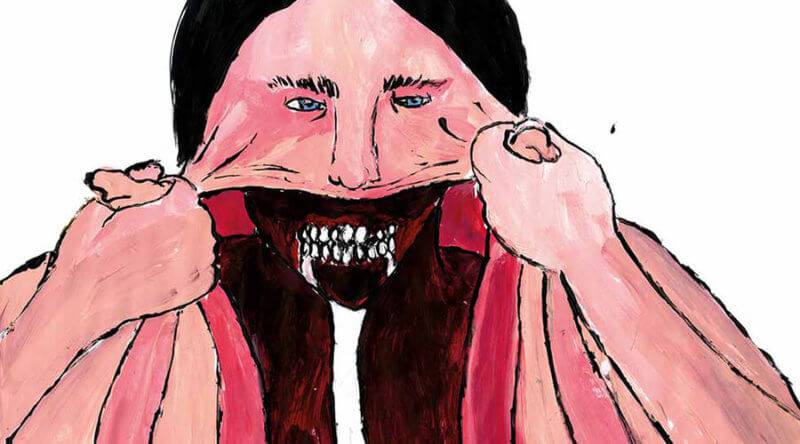LIAF 2018 – An End of Year Revisit
This year’s London International Animation Festival, served up a smörgåsbord of animated delights. There was the opening night gala’s celebration of British talent including a retrospective of Will Anderson and Ainslie Henderson. The evening seemed particularly pertinent in the wake of Anim18, the nationwide event which has strived to fortify the UK’s animated heritage, as well as provide opportunities to an existing industry. Alas, when again shall we have a celebration which rolls so easily off the tongue- Anim80 anyone?
Over a ten day programme, LIAF preceded to delve into the multidimensional world of animation, showcasing select programmes geared towards the fanatic. Whether you’re a lover of experimental animation or a creepy coffin dweller in search of your next gory fix, the shorts selection was organised accordingly. These programmes were tailored to give independent animation the attention it deserves. LIAF additionally grouped its longer shorts into a ‘Long Shorts’ category. An interesting decision, given that each short ran from 15-20 minutes and required a truly enduring audience. For these highly ambitious projects you really had to be in it for the long-haul and, as indicated in the official hand-out: ‘Some films need extra time to develop their themes, to grow and draw us more comprehensively into their worlds”.
It truly was the world-building facet of these animations which unified the programme. Each film conjured up new systems of logic within the constraints of its narrative. Finity Calling, which won the jury award for best sound design, was avant-garde through and through. The director, Jasper Kuipers, fabricated a single scene involving five people seated around a table. Physical elements of his production are lavish and opulent. The guests at the banquet are clothed in extravagant attire (clothes which could have been born from the mind of Alexander McQueen.) The food is far too beautiful to be eaten and it is the unruly distribution of these elegant treats which leads to the descent of order.
A certain boy beneath the table is hungry for scraps. We have no idea who he is, how he has come to be involved in this whole, bizarre affair. Kuipers tantalizes the viewer with a tiny fraction of his world. We begin to comprehend Finity Calling to be in fact a microcosm of a vast and complex macrocosm. The film, which delivers its visuals in stunning, hyper-real detail, actually leaves a lot to the imagination. We are left with so many unanswered questions, but it is perhaps the unknown which we relish in as audiences.
Other films in the Long Shorts programme follow suit. Might animation have a unique ability to nods its head to the limitless, to usher us into the boundless depths of space, time and consciousness? Films like Buksi’s Solar Walk and Boris Labbe’s La Chute affirm this belief, evoking mysterious, cosmic consequences. Similarly, Reruns and Mermaids and Rhinos follow a dream-like logic. At this level, animated shorts are given permission to extend their reach. They can be ambidextrous in style, whilst also utilising the basic qualities of animation to their full potential: morph, transform, distort and warp; what could you create for a 20 minute short?
Elsewhere at LIAF, ‘Female Figures’ took centre stage in a special programme followed by a panel of contributing directors. This stimulating Q&A, led by Abigail Addison of Animate Projects, included Thalma Goldman Cohen, Kate Jessop and Jenny Jokela. Jez Stewart, a BFI National Archive curator, was also assembled to speak on behalf of feminist animation- although there were jests with regard to him being the only man on the panel.
This year, Addison wrangled twelve films from the animated universe. The selection worked to expose and cultivate varied perceptions surrounding the female body, attitudes towards female sexuality and unfamiliar realms of desire. The sometimes-ugly truths and bittersweet memories of romantic relationships were all ingredients to this emotional stew. Not to mention a dash a BDSM, curtesy of Bogna Kowalczyk’s Vanilla Whip.
Jenny Jokela’s film Barbeque, came about from her reaction to the #MeToo movement. It’s fluid, painted style portrays the aftermath to an abusive relationship. The female figures found here are often lurid and macabre; women remove their skin to expose muscle tissue and large fish emanate from their vaginas. Jokela explained how she wanted to make the women seem as strange and gruesome as possible in an effort to desexualise their experiences. Her process was as organic as the film essentially felt. Discarding a traditional storyboarding technique, she began with a large painting, and developed each scene from its various sections.
The importance of female animators working to counteract a history of the male-gaze was iterated in the discussion. Jez Stewart astutely pointed out that it was likely the element of control in animation which has attracted feminist animators to the drawing table. The frame by frame precision which goes into constructing a female figure, allows the animator to have total sovereignty over who she is, what she looks and sounds like. Therefore, when the task of conveying female forms is placed back into the hands of a women, it becomes a direct reclamation of femininity.



